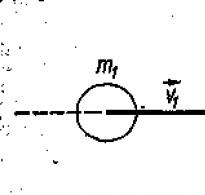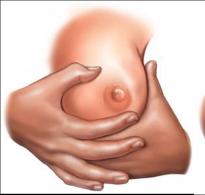Commodity characteristics of shampoos. Origin of the word "shampoo" History of shampoo
Shampoo: don’t choose based on the brightness of the packaging
Shampoo– a cosmetic product for cleansing hair from particles of fat and dirt.
Story
Stories of famous various methods of hair care. The head was washed with a mixture of water and ashes from burnt plants, decoctions of fruit and vegetable peels, and the peel and pulp of plants. Coconut oil was used to moisturize hair, and dandruff was treated with chaparral bush extract.
At the end of the 19th century, Englishman Casey Herbert created the first shampoo (Shaempoo), which was a mixture of soap and herbs. The novelty quickly gained popularity among Londoners, and Herbert became a successful businessman - soon shampoo in bags could be bought in all major pharmacies and hairdressers.
In the rest of Europe, people continued to wash their hair using a mixture of ash, soap, vinegar and gasoline. This continued until one lady came to the local pharmacy to the chemist Hans Schwarzkopf and told him about the English wonderful powder. After some time, Hans Schwarzkopf developed the formula for powder shampoo and put its production on stream. In 1903, he used his own logo with a silhouette of a head and the inscription Schwarzkopf (German for “black head”).
Despite the high cost, the product began to sell successfully. Therefore, after some time, Schwarzkopf decided to improve the formulation of the product. To do this, he added violet extract to the shampoo - so the product acquired a pleasant smell. Later, customers were presented with shampoo with almond oil and panthenol.
The talent of a marketer allowed Schwarzkopf to expand production by producing an entire line of products. A year after the product went on sale (in 1904), the chemist opened his own Schwarzkopf factory, which began producing 8 types of shampoo: yolk, herbal, oxygen, lanolin, sulfur, with resin extracts, birch and chamomile.
When the “king of shampoo” passed away in 1921, his wife and son continued his work. They expanded production, and already in 1927, customers were able to appreciate the first liquid shampoo. In 1947, Schwarzkopf released the first alkali-free hair cleanser - this is the “grandfather” of all modern shampoos.

The head is not a laboratory for experiments
Kinds
The heroes of the famous French comedy "One Million Years BC", who for centuries hunted for the shampoo of the Clean Hair tribe, could only envy the variety of products presented by modern manufacturers. With such a choice, you can get lost. Let us highlight the types into which all modern shampoos can be divided.
- Shampoo for oily hair. The product contains many detergents that effectively cleanse the skin and hair of excess oil.
- Shampoo for normal hair. There are less detergents here. This product cleanses the hair without interfering with the natural secretion of oils.
- Shampoo for dry hair. It contains few detergents, but adds a humectant to prevent excessive dryness of the skin and hair.
- Mild shampoo for frequent washing. This product does not irritate the scalp and does not dry out the hair.
- Anti-dandruff shampoo. The composition includes substances that slow down the division of skin cells and effectively remove dead scales. Generally not suitable for frequent use as it leaves hair dry and dull.
According to another classification, shampoos can be divided into the following groups:
- neutral (just clean);
- therapeutic, or caring (provide additional care);
- tint (with the addition of coloring components);
- deep cleaning.

There are so many shampoos. Which one is better to choose?..
Compound
The main component of any shampoo is detergents, also known as surfactants. When specifying the composition of a shampoo, detergent is always listed first. Detergent components coat particles of fat and dirt contained in the hair and scalp, after which they are washed off with water. Almost all shampoos produced today use synthetic detergents (surfactants). The most commonly used surfactants are the following (listed in order of improvement in their quality, i.e. softness).
- Ammonium Lauryl Sulfate (ammonium lauryl sulfate)
- Ammonium Laureth Sulfate (ammonium laureth sulfate)
- Sodium Lauryl Sulfate (sodium lauryl sulfate)
- Sodium Laureth Sulfate (sodium laureth sulfate)
- TEA Layril Sulfate (TEA lauryl sulfate)
- TEM Laureth Sulfate (TEA laureth sulfate)
Now let’s run to the bathroom and see what you wash your hair with. The first two surfactants are the cheapest and are harsh from a dermatological point of view. As a result, they make hair dry, brittle, and irritate the scalp. But if you find one of the last three surfactants in your shampoos, there is reason to rejoice. You have a really high quality shampoo.
In addition to detergents, detergents contain additives - preservatives, flavors, dyes, viscosity regulators, pearlescent additives and many other components.
In order to improve the consumer properties of shampoos, manufacturers began to add conditioners to them, which can improve the appearance of hair. Conditioners neutralize the alkaline effects of detergents in shampoo, moisturize, and give hair volume, shine, softness and elasticity. They have the ability to restore damaged hair, successfully protect it from the harmful effects of the environment, too high or low temperature, chemicals, and facilitate styling. To be fair, it should be noted that the effect of the conditioner in the shampoo is weaker than in separately used conditioners.
In shampoos you can often find silicone additives (names ending in -methicone), for example, dimethicone and cyclomethicone. Distributed along the hair shaft, they form a protective film. This gives volume, shine, silkiness, hair is easier to comb and less tangled.
Protein (protein) conditioners in shampoos are used to restore damaged hair, including those that have been permed. Since hair is 93% protein, some types of plant proteins can penetrate the hair shaft, filling damaged areas - cracks, voids, split ends of the hair. Thanks to this, the hair is restored, becomes voluminous, shiny and elastic. One such protein supplement is hydrolyzed keratin.
Humidifiers, which contain plant extracts, glycerin, panthenol, sorbitol, propylene glycol, attract moisture to the hair.
To protect hair from the drying effects of the sun, ultraviolet filter (SPF) additives are used.
Thermal protectors (names of components with the prefix thermo-, thermo-) - polymers that absorb heat and distribute it along the length of the hair - protect the hair from thermal damage. This is especially true for those who regularly use a hair dryer and use hot rollers.
Modern manufacturers widely use biologically active additives in shampoos - plant extracts, vitamins, infusions, extracts. The most beneficial vitamins for hair are vitamins A, PP, and B vitamins. They activate hair growth, prevent hair fragility and loss, and serve as a preventive measure for dandruff. True, they are most effective when taken orally, so buy “beauty complexes” in tablets.
In hair care products you can often find vegetable oils (burdock, castor, avocado oil, jojoba), as well as lanolin. They have the property of enveloping the hair and retaining moisture, strengthening the hair roots and promoting active hair growth.
Anti-dandruff shampoos contain antimicrobial components (climbazole, zinc pyrithione, ketoconazole, selenium disulfide), substances that help peel off scales (salicylic acid, tar, sulfur) and reduce the level of sebum secretion (octopirox, tar, selenium disulfide).

Conditioner is a necessary addition to shampoo
When choosing shampoo, it is important to adhere to several rules:
- Choose a shampoo based on your hair type and condition. Believe me, a “universal” or “family” shampoo is far from the best option.
- It is especially important to carefully choose a shampoo for people who have to wash their hair every day, those with sensitive scalp, and those who like to regularly dye their hair.
- Please note that a good shampoo contains 20-30 chemical ingredients that care for hair. But if you suffer from allergies, it is better to choose a product with a small amount of ingredients. This will reduce the likelihood of a negative reaction.
- Choose a product with a higher quality main detergent. Remember - mild shampoo brings more benefits to your hair.
- Don't be fooled by the word "natural" on a shampoo label. It may refer to individual components of shampoo, but not to detergents. There are no detergent-free products for the simple reason that natural products cannot wash your hair well.
- High-quality shampoo cannot be cheap, so choose products from well-known manufacturers.
- If you end up buying a shampoo with a cheap basic detergent and don’t want to throw it away, don’t use it every day.
- Pay attention to how a particular shampoo affects your hair. After using a good shampoo, the hair becomes clean, voluminous, manageable, shiny, and combs well. The scalp is not irritated and allergies do not occur.
- If after washing your hair becomes too fluffy and light, it means that the detergent was too strong - this led to degreasing of the hair and scalp. In this case, it is better to change the shampoo. Head wash, article on myJane.ru
Inventor: Hans Schwarzkopf
A country: Germany
Time of invention: 1903
In China, local residents applied cedar extract to improve hair growth, which not only strengthened the hair, but also gave it a pleasant aroma. In Indonesia, the ashes of rice straw and husks were used as shampoo, which were mixed with water until foam formed. True, after this the hair became very dry.
Coconut oil, which has moisturizing properties and is still used as one of the components in the manufacture of natural hair masks, helped to restore their natural shine. Arab women took care of their hair by boiling quince peel, and Filipino women replaced hair balm with water in which aloe stems were soaked.  In Europe, the first shampoo appeared at the end of the 19th century and was a powder containing soap powder and herbs. The invention of the first shampoo is associated with the name of Casey Herbert. But Hans Schwarzkopf was the first to patent hair cosmetics in 1903, constantly improving the composition of the powder. Schwarzkopf added herbal extracts to it, thanks to which the hair acquired a healthy appearance.
In Europe, the first shampoo appeared at the end of the 19th century and was a powder containing soap powder and herbs. The invention of the first shampoo is associated with the name of Casey Herbert. But Hans Schwarzkopf was the first to patent hair cosmetics in 1903, constantly improving the composition of the powder. Schwarzkopf added herbal extracts to it, thanks to which the hair acquired a healthy appearance.
Initially, Hans sold various kinds of perfumes, as well as pharmaceutical products, in a small shop. However, a talented person wanted to invent a product that would be designed specifically for washing hair. And he succeeded - numerous chemical experiments led, in the end  finally to the creation of shampoo. True, that shampoo was improved every year. Hans Schwarzkopf became the owner of a real cosmetics empire, and the world famous logo - the black profile - first appeared back in 1905.
finally to the creation of shampoo. True, that shampoo was improved every year. Hans Schwarzkopf became the owner of a real cosmetics empire, and the world famous logo - the black profile - first appeared back in 1905.
Then panthenol and essential oils appeared in the shampoo, which occupied not the last place in cosmetology, due to the fact that the effect of their use can be compared with the effect of hair balm. A few years later, the range of shampoos included more than five types, including chamomile, yolk, herbal and other shampoos. And only in 1927 liquid shampoo appeared.
In the prosperous 30s, the situation in Europe was very suitable for the cosmetics business - people began to think more about their appearance. Toilet market  funds developed at a rapid pace. Already in 1931, Schwarzkopf's competitors, the Hamburg Beiersdorf Group, managed to develop their own chemical formula for shampoo.
funds developed at a rapid pace. Already in 1931, Schwarzkopf's competitors, the Hamburg Beiersdorf Group, managed to develop their own chemical formula for shampoo.
And in 1934, the French factory L'Oreal also introduced a soap-free hair wash to the market. Six years earlier, Eugene Schueller, founder of L’Oreal, bought Monsavon, a small company that produced toiletries. This acquisition allowed L'Oreal, which specializes in the production of hair dyes, to penetrate the toilet market.
L'Oreal's first liquid shampoo was called Dop. But Dop shampoo had a hard time catching on in the market. Then, to find out the reason, Eugene Schueller commissioned a study, which found that 30% of French people never wash their hair at all.
The great marketer Schueller found a way out: in his advertising he addressed children and their parents. It is he who is responsible for the fact that the next generation of Frenchmen washed their hair exclusively with shampoo. Subsequently, this technique was and is used by a lot of companies to promote any products that are somehow  can be associated with the younger generation. There was only one obstacle remaining on the way to the global dominance of shampoo - the high price.
can be associated with the younger generation. There was only one obstacle remaining on the way to the global dominance of shampoo - the high price.
The Americans were the first to remove the price obstacle. It was in America that the first successful mass-produced shampoo was released. The composition of this hair wash was developed by the American John Breck. He began his research during the Great Depression at his clinic in Massachusetts. And after a decade of work in 1930, the optimal ratio of ingredients was achieved.
The new shampoo was affordable for many. In addition, for the first time, consumers were offered a line of shampoos: for dry and oily hair. The new shampoo sold well, but the effect that Breck had the right to count on did not happen. It seemed simpler: “if you want to become rich, work for the poor”! This was done. It seemed, what else if price is not an obstacle? But America is faced with the same problem as Europe: most are not used to spending (even small) money on special hair washing products.
For true widespread success, a new culture and a new cult of purity were needed. This did not happen. America wouldn't be America if it weren't for entrepreneurial people  Americans on the path to commercial success could be stopped by this circumstance. And Breck remembered “that there is an engine of trade.” Definitely: advertising. From this moment on, the history of Breck shampoo ceases to belong only to the cosmetics industry.
Americans on the path to commercial success could be stopped by this circumstance. And Breck remembered “that there is an engine of trade.” Definitely: advertising. From this moment on, the history of Breck shampoo ceases to belong only to the cosmetics industry.
The company's triumph exceeded our wildest expectations and became a classic example described in textbooks on advertising courses. The Breck Shampoo advertisement was practically the first where, in addition to the text, a high-quality image appeared, which carried no less semantic load than the text. Cosmetic companies adopted the method: since then, the cosmetics industry has been developing itself and further enriching the advertising industry and advertising art
This success story began like this: Edward Breck, the son of the founder of the Breck Shampoo brand, got down to business. In 1936 he  hired commercial artist Charles Sheldon to paint girls for a shampoo advertisement. And the first “Breck Girl” appeared. Sheldon's early works for Breck are done in pastels, with a halo of soft light around the model.
hired commercial artist Charles Sheldon to paint girls for a shampoo advertisement. And the first “Breck Girl” appeared. Sheldon's early works for Breck are done in pastels, with a halo of soft light around the model.
Breck's advertising slogan promised that hair would become shiny and soft, like a child's. Thus, the invention of French marketers continued its development. Sheldon created feminine, romantic images. The idea of purity was presented as a perfect image, as an ideal combination of chastity and neatness, i.e. cleanliness internal and external. Sheldon preferred ordinary women to professional models. For half a century, Breck's posters represented  represents the ideal of the American woman - a desirable, but immaculate natural beauty.
represents the ideal of the American woman - a desirable, but immaculate natural beauty.
Many years have passed since then and there is no shortage of shampoos, as well as their manufacturers. The competition in this market is simply fierce. In pursuit of consumers, companies spend millions on advertising and developing new products. You can't make a mistake in your choice. After all, our hair, one of the main adornments of a person, is at stake. But still, it is sometimes useful to remember the interesting history of the creation of shampoo - a product without which we now cannot imagine our lives.
According to the world-famous electronic encyclopedia Wikipedia, the word shampoo appeared in 1762 in English and meant “massage”. The word was borrowed from Anglo-Indian slang, common in British India among the English living there. In Hindi, the word chāmpo, derived from chāmpnā, means to spread, to knead something. In turn, the word chāmpnā is a borrowed word from Sanskrit, champā, which was the name of a flower of the magnolia family - Michelia champaca, which grows in South Asia and is traditionally used by the local population to prepare fragrant oil for hair.
The term shampoo and the method of its use were used by Indian-born entrepreneur Din Muhammad, who opened a so-called “shampoo” bath called “Muhammad’s Indian Bath” in the English resort town of Brighton in 1759. His bath was exactly the same as the Turkish baths, which were extremely popular at that time. However, he introduced his own innovation in the form of a massage using soap diluted in water with the addition of various Indian incense. This unique method was so appreciated by contemporaries that his establishment received official approval from two British monarchs George IV and William IV.
In the early days of using shampoo, English hairdressers made it from planed soap dissolved in hot water with the addition of various herbs, which added shine and aroma.
Initially, the composition and use of soap and shampoo were almost identical. Modern shampoo, as we know it today, first appeared in 1930 under the brand name "Drene", its main difference being that it was prepared using synthetic (not soap - at that time soap was made exclusively from natural raw materials) ingredients.
Modern shampoos are divided into several different types depending on the components they contain; the most common are 3 main types of shampoos:
- synthetic shampoos, based on salts with a high sulfur content, their only advantage lies solely in their low cost. And the main disadvantage is that salts greatly deplete the hair. You can always easily find this category of shampoos in your nearest supermarket.
- synthetic shampoos, without salts, their cost is much higher, but the benefits they can give to hair are still in question.
- and finally, shampoos that are rapidly gaining popularity in a world that is increasingly striving for naturalness, so-called organic shampoos, with a high content of natural ingredients. The components that are used in these shampoos can be completely traditional, such as sandalwood oil, musk, extracts of various plants, fruits and berries. Recently, manufacturers have begun to use unique and rare components, which has allowed them to achieve amazing results. The shampoos are based on seaweed, medicinal clay, black caviar and many other rare ingredients. But some manufacturers go even further. For example, just recently, one of the world's largest cosmetics manufacturers, Supre Inc, introduced to consumers a line of hair products under the Hempz brand, which are based on hemp seed oil and extracts. The manufacturer motivated this by the fact that hemp seeds contain the largest amount of polyunsaturated fatty acids, which are the main building material for our hair.
And this, apparently, is not the limit. So we are waiting for new, even more interesting products, but in the meantime we carefully study the labels indicating what such an ordinary and familiar product as shampoo is made of.
Shampoo from the pharmacy
The origins of the traditions of making hair detergent should be sought in the East. In Europe there was not even a tradition of washing hair with special products. Europeans brought the habit of regularly washing from China and the countries of the Middle East.
While traveling to unknown countries, the inhabitants of the old world were very surprised at the attention the natives paid to self-care. For a long time in Europe, excessive attention to one’s body and caring for it was considered sedition. In the middle of the 18th century, the English parliament even passed a special law against “miracle potions.” According to it, all women who used perfume and makeup were subject to punishment as witches, and marriages concluded with them were dissolved. However, the fashion for bodily purity overcame the fear of religionists.
According to one version, the name “shampoo” comes from the Indian word “shampo”, which translated from Hindi meant “massage”, “rub”. This is what the Hindus called special herbal remedies that they used to wash their hair.
The invention of shampoo is associated with the name of the Englishman Casey Herbert. His shampoo was dry powder - a mixture of powdered soap and grass. This powder was called Shaempoo. He sold it in paper bags. This happened at the end of the 19th century.
And in 1903, one corrosive customer came into Hans Schwarzkopf’s small pharmacy store on Passauer Strasse in Berlin. Frau talked about small packets of hair wash that she had recently bought in England. “It's so convenient! - the woman admired, “It would be great if you had something similar, I could use it all the time!” The prudent German, being a chemist by training and a good entrepreneur by vocation, quickly set up the production of hair washing powders. And he even patented a trademark with a logo that is still known today.
The surname of the company's founder literally translates as “black head.” Hans decided not to stop there. He added violet extract to the powder, thanks to which the product acquired a subtle aroma and tonic properties. The composition also included panthenol and almond oil, which are still added to shampoo. In 1927, Hans's son, who headed the company's management after his father's death, developed a technology for making liquid shampoo. The thrifty Germans liked this idea; the bags of powder got wet, and besides, liquid shampoo was easier to dose.
Garden head... and dirty
The interest in one's appearance that arose in the 30s served as fertile ground for the flourishing of cosmetic companies. In 1931, Schwarzkopf's competitors, the Hamburg Beiersdorf Group, managed to develop their own chemical formula for shampoo.
And in 1934, the French factory L"Oreal also introduced a soap-free hair washing composition to the market. The first liquid shampoo L"Oreal was called Dop. But Dop shampoo had a hard time catching on in the market. Then, to find out the reason, Eugene Schueller, founder of L'Oreal, commissioned a study, which revealed that 30% of French people never wash their hair at all.
Eugene was not the only one faced with such a problem. His colleague in misfortune turned out to be the American John Breck. And if Schueller’s products were not affordable, then John worked under the motto: “if you want to get rich, work for the poor.” His shampoo was sold at quite reasonable prices, but was, in fact, not in demand. A new standard of hygiene and cult of cleanliness was needed. And then Breck remembered the advertisement.
The Breck Shampoo advertisement was practically the first where, in addition to the text, a high-quality image appeared, which carried no less semantic load than the text. Cosmetic companies adopted the method: since then, the cosmetics industry has been developing itself and further enriching the advertising industry and advertising art.
But Schwarzkopf also did not sit idle. In 1947, the company released Onalcali, the first alkali-free shampoo - the prototype of all modern shampoos.
Now shampoo manufacturers promise us, in addition to strong, healthy hair, silky softness, diamond shine and other delights. And this is one of those cases when advertising saved not only the brand, but the industry as a whole. Otherwise, we would still be washing our hair with soap and herbal powder, and a third of the French population would walk around with dirty hair.
Did you like the publication?
Shampoo is the most famous hair washing product. It consists of several components. The first shampoo appeared in England in the 19th century. Before its invention, hair was washed with ash or soap, but after washing, a light coating remained on the hair. Noble people washed their hair with expensive oils.

The history of shampoo began with Casey Herbert from England. He mixed the herbs with soap powder and named the mixture Shaempoo. Casey Herbert was not a rich man, and it never occurred to him to patent his invention. He sold his own shampoo right on the street near his home. Many people liked his idea, and soon smart pharmacists and hairdressers repeated this easy recipe. Shampoo bags began to be sold on every corner.

A little later they found out about this shampoo in Germany. There they also washed their hair with ash and soap, but to get rid of plaque they rinsed their hair with vinegar or gasoline. In Germany, shampoo has already become similar to the real thing. It was modified by a pharmacist from Berlin, Hans Schwarzkopf. One day, one of the customers told him about an amazing product in bags that she bought in England for washing her hair. Schwarzkopf was a chemist, and it was not difficult for him to create a similar shampoo. First, he invented the same powder and began selling it. But Hans turned out to be more cunning than the Englishman and created the Schwarzkopf brand from his surname, the name, by the way, translates as “black head”, and came up with a similar logo. At the same time, he patented his shampoo.

After some time, Schwarzkopf created his own company producing shampoo. The recipe was constantly changed and refined. Flowers and herbs were added to it. There were eight main types of shampoo back then. After using them, my hair became fragrant and looked healthy. The history of liquid shampoo began in 1927; it was invented by the son of Hans Schwarzkopf, when his father was no longer alive.
Nowadays there are a huge number of hair care products, and every year it grows. Moisturizing, caring, restoring, and toning shampoos have appeared, and for different hair types.






